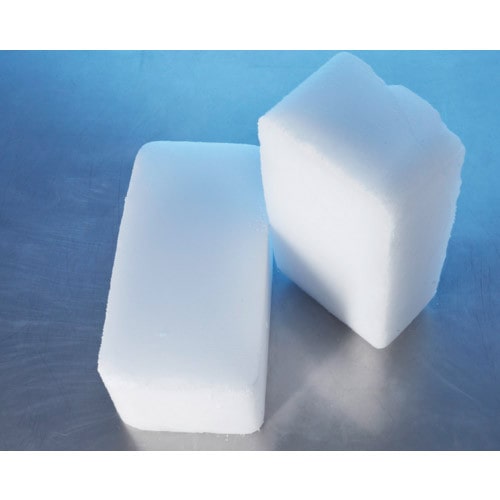Project Report For Dry Ice Manufacturing
Introduction
Project report for Dry Ice Manufacturing is as follows.
Dry ice is a different name for frozen carbon dioxide. This substance, which freezes at roughly -109 degrees F, is popular because its solid form sublimates directly into gas under normal air pressure, leaving no moisture behind. Because dry ice is only carbon dioxide, it is non-toxic and, when cleansed, acceptable to use around food. However, because of its low temperature, it can cause burns when it comes into contact with naked flesh and should be handled in well-ventilated settings to avoid asphyxia.
Dry Ice Manufacturing Of History
Dry ice was found in the early 1900s and used commercially for the first time in the 1920s. The term “dry ice” has been in use since 1925, when a company first registered it as a trademark. The compound, which is commonly encountered in industrial settings, is versatile and has applications in a wide range of industries.
Dry ice is used in the food and agriculture industries, for example, to protect food from rotting during shipping. Dry ice reduces bacterial development and slows deterioration, keeping food crisp, fresh, and tasty for as long as possible.
Project Report Sample Of Dry
Ice Manufacturing
Get Completely Custom Bankable Project Report
The Manufacturing Process
Dry ice is produced as a byproduct of the refining of ammonia, petroleum, or other substances. This gas is frequently obtained from the ammonia manufacturing process since it is the most economical way to manufacture carbon dioxide, but in the United States, it is also primarily obtained through the ethanol production process. Natural gas is burned to separate carbon and hydrogen atoms, and the hydrogen is then mixed with nitrogen to form ammonia. The remaining carbon can then be combined with oxygen to produce carbon dioxide.
Carbon dioxide intended for contact with food is cleaned after harvesting to make it food grade. This is achieved by passing it through a container containing a CO2 adsorbent. As the carbon dioxide is absorbed, the residual gases are vented and disposed of using a thermal oxidizer or a flare.
When the chamber is empty save for the carbon dioxide-filled adsorbent, the adsorbent is heated to discharge the cleaned gas with a clean CO2 sweep blast. The excess carbon dioxide can then be extracted and transferred to the next process, when it will be liquefied. This is performed by compressing and chilling the CO2 to a pressure of around 870 pounds per square inch.

Depressurization converts liquid carbon dioxide to solid carbon dioxide. CO2 is introduced into a tank at normal atmospheric pressure via an expansion valve, which relieves the liquid’s pressure and allows it to gasify anew. As the gas expands, the temperature within the tank drops, causing slightly less than half of the carbon dioxide to solidify before it can become a gas.
This 46% carbon dioxide condenses as snow on the upper plate of a press, where it is pressed to form a block for around five minutes under 60 tonnes of force. Snow is extruded through dies in a pelletizer to make dry ice pellets.
If the snow is compacted into blocks, a two-foot-wide block is discharged from the chamber via a conveyer belt. From there, pneumatic saws cut it to the required size. To avoid sublimation into gas, the pellets or blocks must be firmly packed inside insulated containers. For further protection, blocks are sometimes wrapped in paper or other materials.
Market Potential Of Dry Ice Manufacturing
The Dry Ice Market is expected to be valued at USD 140 million in 2021. The worldwide dry ice market is estimated to grow at a 7.8% CAGR over the forecast period.
Expenses

Product Cost Breakup

Reveneue Vs Expenses

Market Trend

The India dry ice market is expected to grow rapidly.. During the forecast period of 2021-2027, the market is expected to increase at a CAGR of 4.7%. Dry ice suppliers are seeing a profitable market due to expansion in the food processing and transportation sectors.
The expanding usage of dry ice as a refrigerant in the transport, food, transportation, medical, and entertainment industries is driving India’s dry ice market. Furthermore, perishable food goods are shipped globally through efficient refrigeration facilities to ensure they remain at the proper temperature, which is fueling the India dry ice market’s growth.
The Dry Ice market has been divided into Storage and Transportation, Food and Beverage, Healthcare, Industrial Cleaning, and Entertainment Industry. Storage and transportation would dominate the market with the greatest market share over the projection period. Time and temperature sensitive shipments necessitate special care and information to enable a controlled and positive interaction with dry ice logistics services.
Dry ice is mostly used for food storage and transportation, perishable goods, clinical supplies, and so forth. Storage and supply chain operations elements take part in clinical trials for pharmaceutical businesses, hospitals, and research organizations. They provide frozen and chilled delivery for food, drugs, medical gadgets, and carbon fibre objects.

